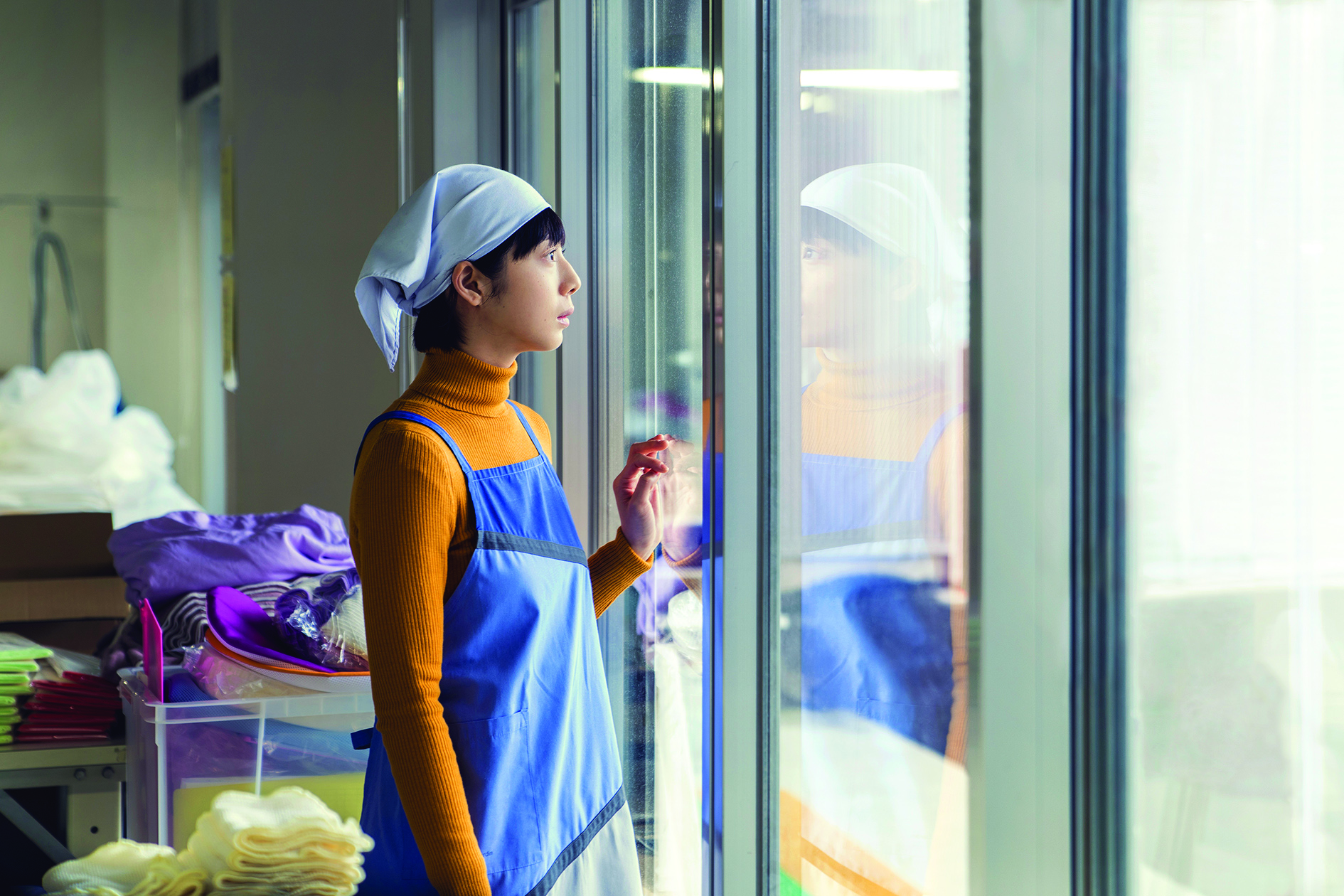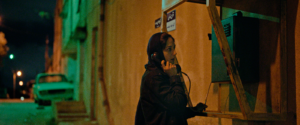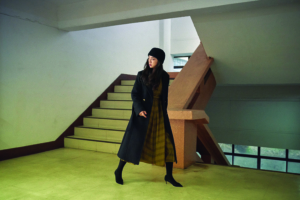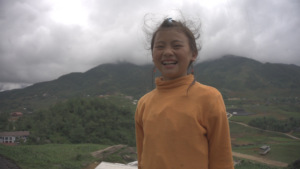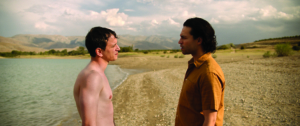Since first emerging on the Japanese horror scene in the 1980s, Kiyoshi Kurosawa has been an enduring name in film. While his style has evolved over the years, he has consistently created bold films and presented the unsettling side of genre – his early films such as The Excitement of the Do-Re-Mi-Fa Girl (1985) include arthouse sequences alongside explicit sexual content. This defiance of convention continues into his work today, which blends distinct visuals and understated performances with his perspicuous brand of thriller. His latest film, Foreboding (2017) – a loose adaptation of a Tomohiro Maekawa stage play[1]Deborah Young, ‘Foreboding (Yocho): Film Review | Berlin 2018’, The Hollywood Reporter, 21 February 2018, <https://www.hollywoodreporter.com/review/foreboding-1087199>, accessed 30 July 2018. – depicts the period leading up to an alien invasion. This narrative formula may be oversold, but, here, it is reignited with Kurosawa’s filmmaking flair and ferocity.
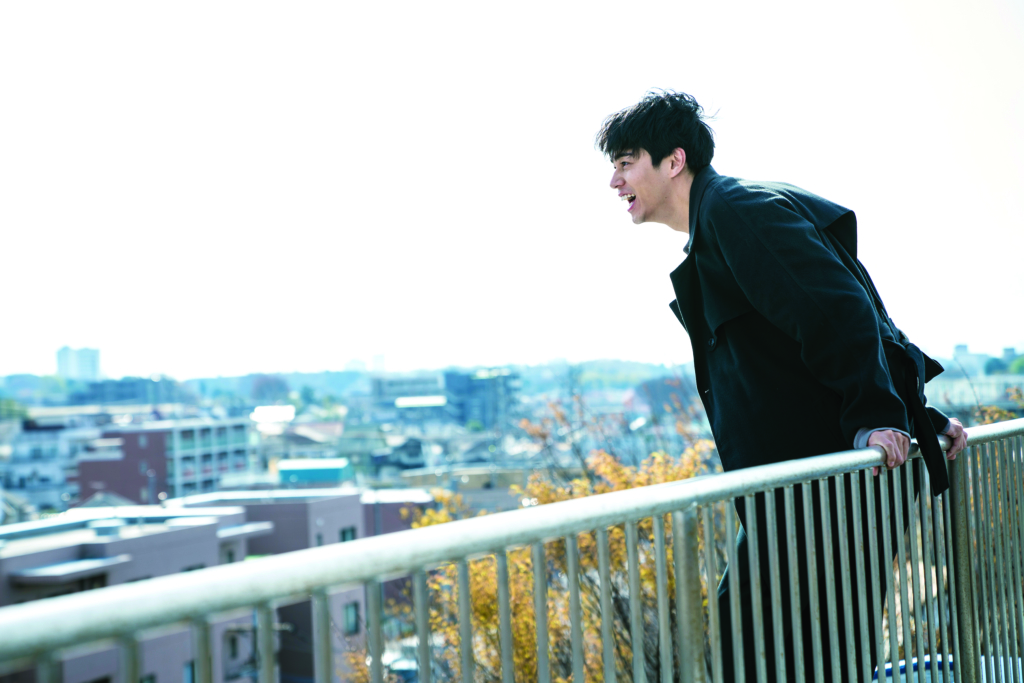
Foreboding opens by introducing us to its two protagonists – Etsuko (Kaho), a seamstress, and Tetsuo (Shōta Sometani), a janitor – whose marriage is marred by a lack of communication and trust. Their modest life is disturbed when Etsuko’s work colleague Miyuki (Yukino Kishii) informs them that a ghost has begun to live at her house. The next morning, Etsuko accompanies Miyuki to discover that the spectre Miyuki is petrified of isn’t a ghost but her living father. Concerned for her co-worker, Etsuko takes her to the hospital Tetsuo works at, where a doctor concludes that Miyuki has lost her idea of what ‘family’ is. On her way out, Etsuko observes Tetsuo talking to a new doctor, Makabe (Masahiro Higashide), who comes across as eccentric and aloof (aided by Higashide physically towering over the rest of the cast). After shifting to Tetsuo’s perspective, the film eventually reveals that Makabe is part of an alien reconnaissance cohort sent to Earth; he has chosen Tetsuo to assist him in his task of stealing humans’ notions of fear, love and time to gather a better understanding of the planet before a complete invasion is set in motion.
Foreboding explores the opposite ways in which Etsuko and Tetsuo become entangled in Makabe’s web of intimidation and indulgence: the former fiercely resists the alien invaders, whereas the latter loses all sense of will, surrendering to complete despair. Yet, in the days leading up to the destruction of humanity, Etsuko finds herself unable to stand Tetsuo being controlled by Makabe – and, even if it means the end of the world, her primary goal is to save him. Kurosawa reflects on this:
Eventually, in a city where everyone has disappeared, how can Etsuko, our protagonist, face the reality? And what kind of determination and strength does she need in order to keep going? I tried to depict this magnificent yet absurd story as realistic [sic] as possible. This is a film heading to the end. I hope that this ending will never become a reality.[2]Kiyoshi Kurosawa, quoted in ‘Yocho (Foreboding)’, Hong Kong International Film Festival 2018 catalogue, available at <http://www.hkiff.org.hk/upload/film/1522833688_38051521.pdf>, accessed 30 July 2018.
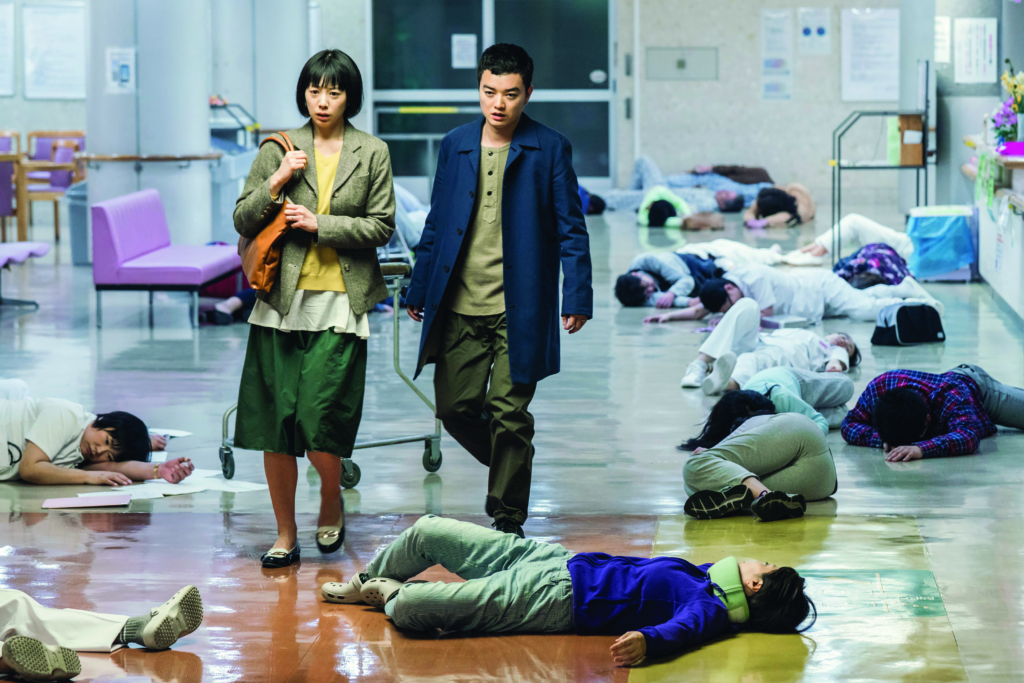
Kurosawa has an undeniably unique and authentic directorial voice. Although he is well known for his early genre works, he isn’t a typical J-horror director; every film he’s made has been constructed with poetic cinematic language. In the case of Foreboding, Kurosawa generates fear and suspense through his canny use of imagery, minimal visual effects and effective performances from the cast. One scene follows Etsuko running through her workplace, slowly pursued by a female alien. As she and the alien pass the halls, her co-workers progressively collapse and faint – with the audience, too, increasingly gaining a deeper understanding of the sense of danger faced by Etsuko. Kurosawa also uses colour to indicate key plot information. In his earlier work Daguerrotype (2016), he engineered a visual disconnect between the film’s two main settings: the natural greens and blues of the outside world and the rich, royal reds of the interiors of the protagonist-photographer’s mansion. In Foreboding, most scenes are bathed in pale green, invoking an atmosphere of cynical sameness, and conveying the characters’ lack of empathy as well as the starkness of their inescapable situation. Another distinctive visual element is the movement of the aliens: before stealing a human idea, the aliens menacingly move their right hand up and strike a curved point with their index finger. This body language becomes a motif that conveys their otherworldly disposition and, through repetition, builds anticipation in viewers. Gestural interactions communicate power dynamics elsewhere in the film. In one sequence, Makabe shows his dominance over Etsuko by offering her his hand; when she takes it, she is locked into his vice-like grip, only able to break free once he decides to let her go.
Kurosawa has an undeniably unique and authentic directorial voice. Although he is well known for his early genre works, he isn’t a typical J-horror director; every film he’s made has been constructed with poetic cinematic language.
A notable influence on Foreboding is Takashi Yamazaki’s eponymous two-part live-action adaption (2014–2015) of classic manga Parasyte, which similarly dramatises the lead-up to an alien invasion. Yamazaki’s films also star Foreboding cast members Sometani (as human hero) and, in the first entry, Higashide (as a man-eating alien), but the Parasyte films sport vibrant visual effects and poignant melodrama – the yin to Foreboding’s yang. Certainly, there are many parallels between Foreboding and the Parasyte films; however, Kurosawa’s approach has none of the genre staples seen in Yamazaki’s adaptations, such as flashy effects, fight scenes and excessive blood – ‘I’m not a fan of gory scenes where you have to turn your eyes away from the screen,’ the director has said[3]Kiyoshi Kurosawa, quoted in Gavin J Blair, ‘Foreboding Director Kiyoshi Kurosawa on Being a Horror Master Who Doesn’t Like Gore’, The Hollywood Reporter, 17 February 2018, <https://www.hollywoodreporter.com/news/foreboding-director-kiyoshi-kurosawa-being-a-horror-master-who-doesn-t-like-gore-1085863>, accessed 30 July 2018. – thereby fashioning a decidedly more character-driven film.
This simplicity is a hallmark of Kurosawa’s oeuvre, the director asking his audience to home in on his characters and their motivations. In Creepy (2016), the dynamics of the story strongly rely on the central family’s interactions with their mysterious neighbour as they slowly succumb to his influence. In Foreboding, the protagonists’ biggest challenge is not to defeat the aliens, but rather to overcome their own inner flaws. It’s worth noting that Kurosawa’s previous film, Before We Vanish (2017), was adapted from the same stage play – a more faithful rendition that features similar characters and also Higashide in a minor role. In Foreboding, Kurosawa taps into the audience’s familiarity with the actor’s earlier role and builds on the characterisation he established in the 2017 film.
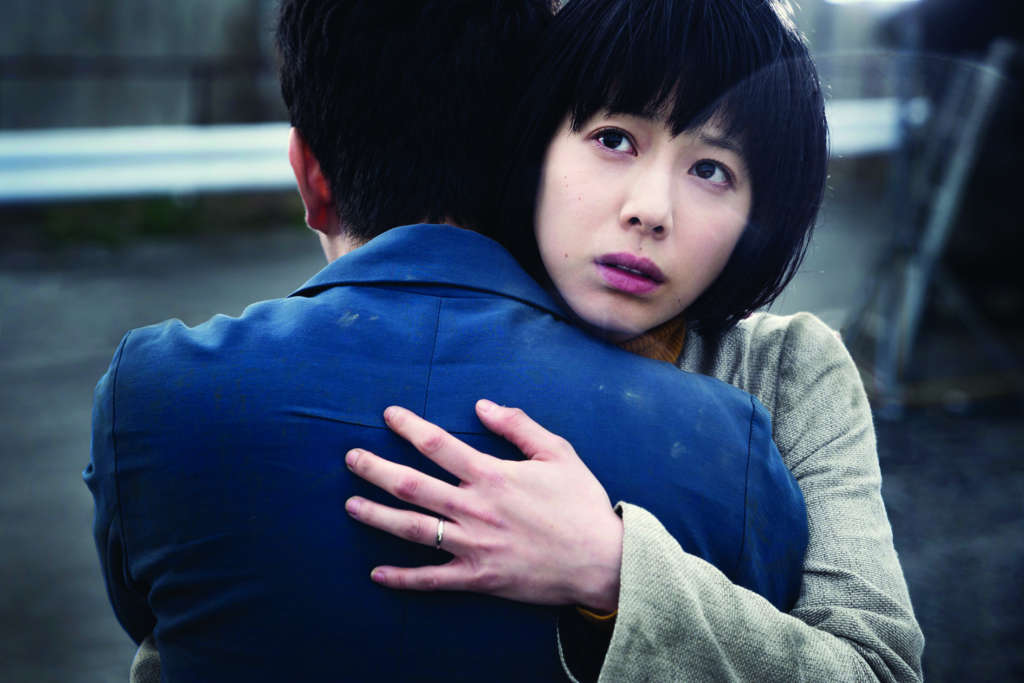
Despite the presence of extraterrestrials, Foreboding contains nothing explicitly supernatural; its horrific elements stem from our conceptions of what the aliens and the apocalypse will bring, instead of anything obvious on screen. We know that Makabe is an alien sent to Earth, but all we are shown is a crazed, egotistical man. In a similar vein, Makabe and the other aliens may have distinctive, fear-generating movements, but their original forms remain a mystery. Together, these realise the ‘less is more’ approach to horror exemplified by European films like Stalker (Andrei Tarkovsky, 1979), in which the dangers of the ‘Zone’ are conveyed largely through characters’ descriptions of it. In this way, while the Parasyte films appeal to Japan’s anime demographic, Foreboding is a sophisticated attempt to reach out to the international market, and its stylistic approach represents Kurosawa’s blending of Eastern and European cinematic languages. Foreboding’s deliberately cold acting and chilling atmosphere could believably be harking back to the charmingly stilted, bitter-edged performances in the films of Yorgos Lanthimos.
Kurosawa himself has described Foreboding as ‘a real genre film’,[4]ibid. but, ultimately, this alien-invasion narrative challenges what we conceive of as ‘horror’. Presenting the world of Foreboding without traditional genre trappings is a challenge that Kurosawa is perfect for. The director has always focused on performances and subtle yet impactful visual language to weave together his stories, and Foreboding does this elegantly by holding onto shots and allowing tension to sink in. Through cultivating a refined sense of mystery, Foreboding leaves its audience with a lasting and intimate experience of terror.
Endnotes
| 1 | Deborah Young, ‘Foreboding (Yocho): Film Review | Berlin 2018’, The Hollywood Reporter, 21 February 2018, <https://www.hollywoodreporter.com/review/foreboding-1087199>, accessed 30 July 2018. |
|---|---|
| 2 | Kiyoshi Kurosawa, quoted in ‘Yocho (Foreboding)’, Hong Kong International Film Festival 2018 catalogue, available at <http://www.hkiff.org.hk/upload/film/1522833688_38051521.pdf>, accessed 30 July 2018. |
| 3 | Kiyoshi Kurosawa, quoted in Gavin J Blair, ‘Foreboding Director Kiyoshi Kurosawa on Being a Horror Master Who Doesn’t Like Gore’, The Hollywood Reporter, 17 February 2018, <https://www.hollywoodreporter.com/news/foreboding-director-kiyoshi-kurosawa-being-a-horror-master-who-doesn-t-like-gore-1085863>, accessed 30 July 2018. |
| 4 | ibid. |
